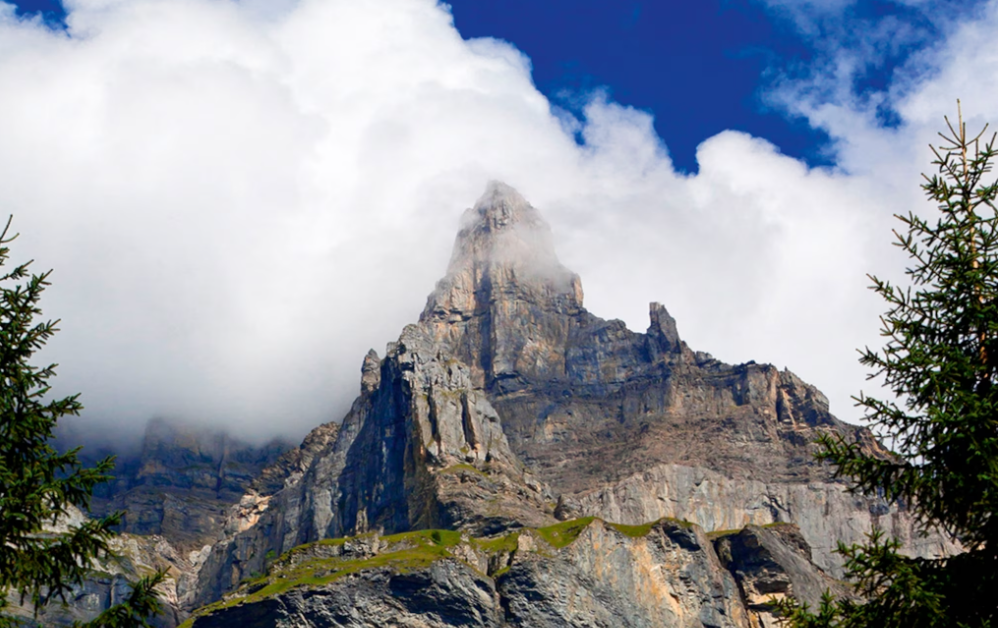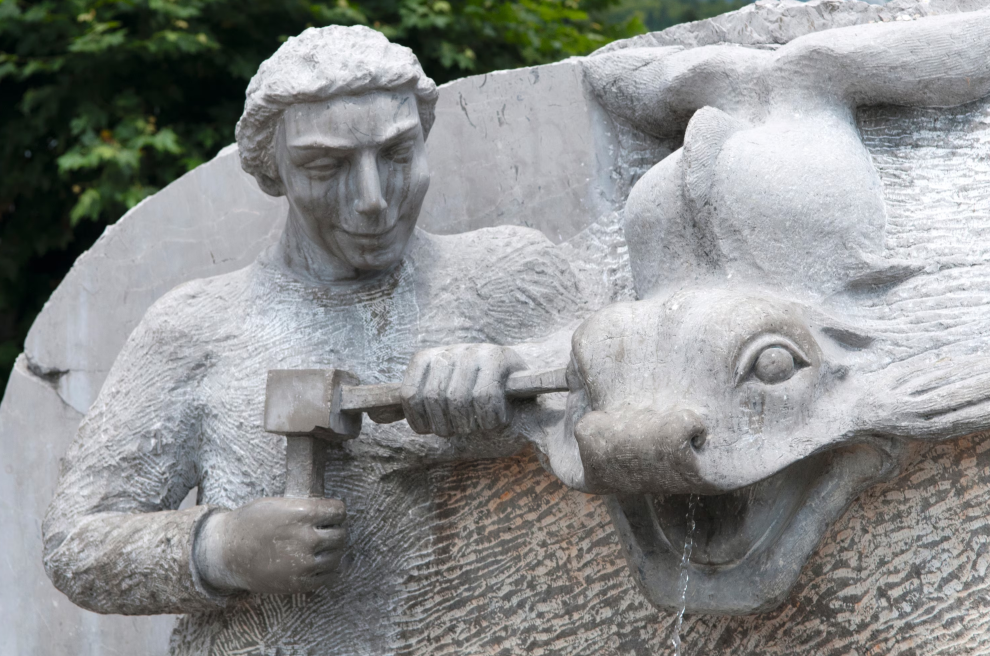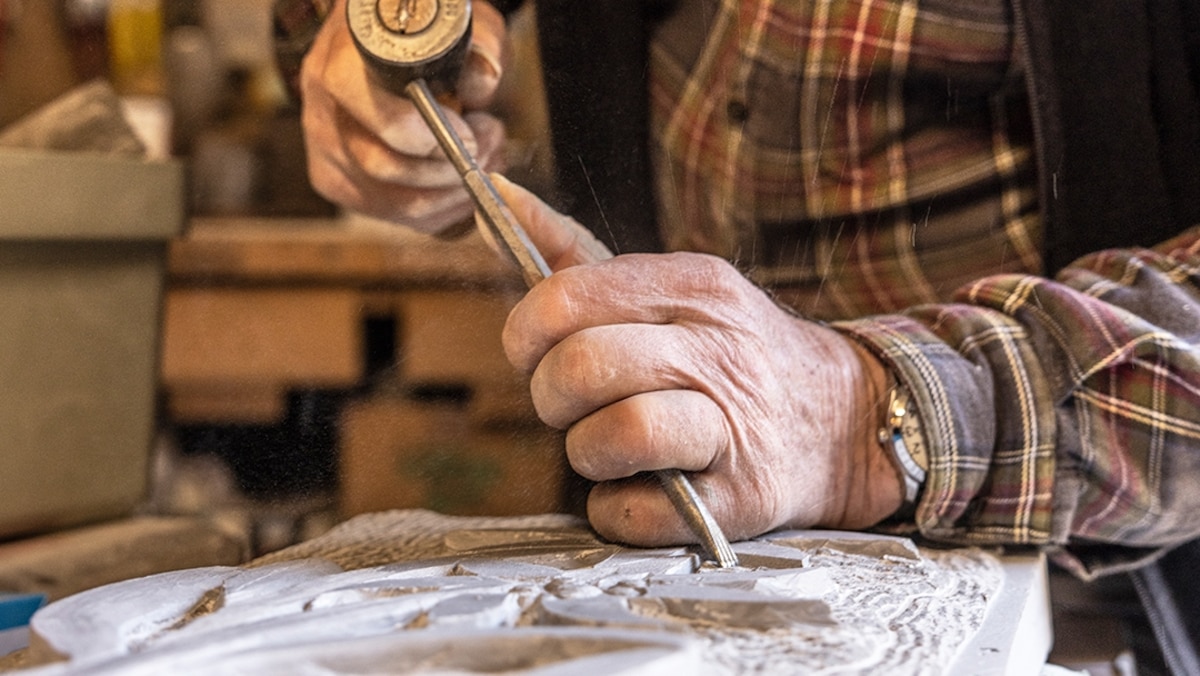Story Behind The World Travelling Stonemasons Of Samoëns. “Look, that one’s my father,” says 81-year-old Pierre Bianco, pointing to a grainy black-and-white photo in an album. It shows a man wearing a flat cap and waistcoat. Standing at the entrance to a quarry alongside a dozen or so fellow workers, all staring solemnly at the camera. One sits on horseback, a small wagon trailing behind. “This was taken in 1903,” he continues. “The horses would travel up to the quarry and take the stone back to town.”
Story Behind The World Travelling Stonemasons Of Samoëns
The town is Samoëns, a small settlement in the Giffre Valley of Haute-Savoie, a region of the French Alps. Local lore says its name originally meant ‘seven mountains’. In a nod to the towering limestone peaks that stand guard all around. Pierre’s thick, calloused hands reveal a lifetime spent working with this limestone. The first to construct houses, later to create delicate, intricate and almost gravity-defying works of art. Among the array of hand-carved sculptures lining every surface of his living room are smooth. Marble-like spheres, slowly rotating on fragile glass stands.

He dives back into the album and picks out another photo, this time showing a group of sombre-looking boys and young men. They’re holding pickaxes and wooden bars, which, as Pierre explains, were once used for levering dynamite into rock crevices. These images are part of a larger collection of newspaper clippings, sketches and illustrations — records documenting a traditional skill and art form that’s in danger of disappearing. “Few young people want to work with stone these days,” says Pierre with a sigh, mimicking a console with his hands. “It’s sad, but it’s very difficult to make a living out of it.”
Profession Behind The World Travelling
Pierre is one of Samoëns’ two remaining stonemasons — a profession that once passed down through generations and brought the valley fame and fortune. During the 17th century, Samoëns was revered for its stonecutters, known locally as frahans. Their reputation spread far and wide: they travelled throughout France, working on projects for the famed military engineer Vauban. And constructing the canals at Saint Quentin and on the Rhône-Rhine. The French philosopher, novelist and playwright Voltaire was so taken with their work that he hired them to build his château in Ferney-Voltaire.
“We know the furthest they travelled was Louisiana,” says Aurélie Veisy, a Savoie Mont Blanc heritage guide. As we sip coffee at local cafe À la Jaÿsinia later that afternoon. “We found the names of three masons in New Orleans archives.” Like many success stories, that of the frahans was a mixture of necessity, opportunity and good luck. Alpine farmers regularly sought alternative work during the winter months, when their fields were blanketed by thick layers of snow. In the Giffre, they turned to the mountains and discovered the local stone had a mineral hardness similar to marble, ideal for construction.
“At one point, there were around 40 quarries in the valley, and nine out of 10 men in Samoëns were stonemasons,” says Aurélie. “There were so many frahans and they were so successful that a brotherhood was formed.” La Société des Maçons aided the low-income, cared for the sick and trained young apprentices in the art of stonecutting. They also developed their own language, called Mourmé. “If they were working and didn’t like their boss, for example, they could talk about him secretly.”
The full story of this secret language has been lost over time. The only record is a Mourmé-French glossary from 1900. Created by a marble worker from Samoëns exiled to French-speaking Switzerland, with texts, anecdotes and even a prayer all written in the language. A copy sits locked away in the basement of the town hall, deep in the heart of Samoëns.
Time Behind The World Travelling Tested
The next day I meet Nora Bériou by the Stonecutters Fountain next to Samoëns’ tourist office. Depicting a frahan at work, the large statue was created in 2000 by Guillaume Bozonnet. The only stonemason other than Pierre working in Samoëns today. Another Savoie Mont Blanc heritage guide. Nora leads regular tours showcasing the town’s history, which is inextricably linked with that of the stonemasons.
We walk along lanes lined with stone and timber buildings to the church of Notre-Dame de l’Assomption. Completed in 1555, it bears the frahans’ hallmarks — an ornately carved architrave flanked by two stone lions and a pair of grimacing faces. In a small cemetery opposite the church. Nora points out a gravestone with two carved hands, the symbol of solidarity of the stonemasons’ brotherhood. Behind The World Travelling

We cross the road towards La Grenette, the town’s covered market space, first constructed in the 14th century. Every Wednesday, stalls spill into the surrounding streets and car park, but, today, we’re here to admire the roof, supported by limestone columns carved during the mid-19th century by local stonecutter François Mugnier.
Nearby stand the tall, wrought-iron gates guarding La Jaÿsinia, a botanic garden commissioned by local entrepreneur Marie-Louise Cognacq-Jaÿ in 1906. She picked an enormous limestone cliff as the location for the gardens, which had to be carved, moulded and shaped over three years by some 300 workers. We climb the steep stairs chiselled into the rock face, past plants and trees sourced from all over the world, including a Californian sequoia and a cedar of Lebanon, until we arrive at a petite chapel near the top.
Behind The Valley
It’s one of nine churches scattered about the valley, all built by local stonemasons. “Marie-Louise would bring her goats up to graze on these rocks while she looked out,” says Nora as we gaze over the valley, washed in late afternoon sunshine, as Marie-Louise would have done. “That’s why they built this chapel.”
That evening, I dine at La Fandioleuse, a tiny, packed restaurant that’s been serving an unfathomable variety of crepes for the last 45 years, all of them listed on the menu in Mourmé. I order Le Pèrlu, meaning ‘the cat’, a savoury pancake folded and stuffed with soft goat’s cheese, pine nuts and olive oil. Owner Marie Delesmillières says the names were a homage to her brother-in-law, who spent time researching the language. “There was obviously the family connection,” she says as she pours crepe mixture onto a sizzling galettière, “but I also did it to honour the stonemasons and the town’s history.”
Before leaving, I stop by Pierre’s to say goodbye. I find him standing outside his house by one of his most impressive sculptures. “This was by far my most challenging piece,” he says. “It took me years to create it.” He encourages me to gently push the 440lb Atlantean stone globe, which the breeze is slowly spinning on a thin film of water. As it starts turning in the opposite direction, I realise what a wonderful tribute it is. Despite changes — of direction, of generations — it remains set in stone, like the legacy of Pierre and so many frahans before him.

Leave a Reply